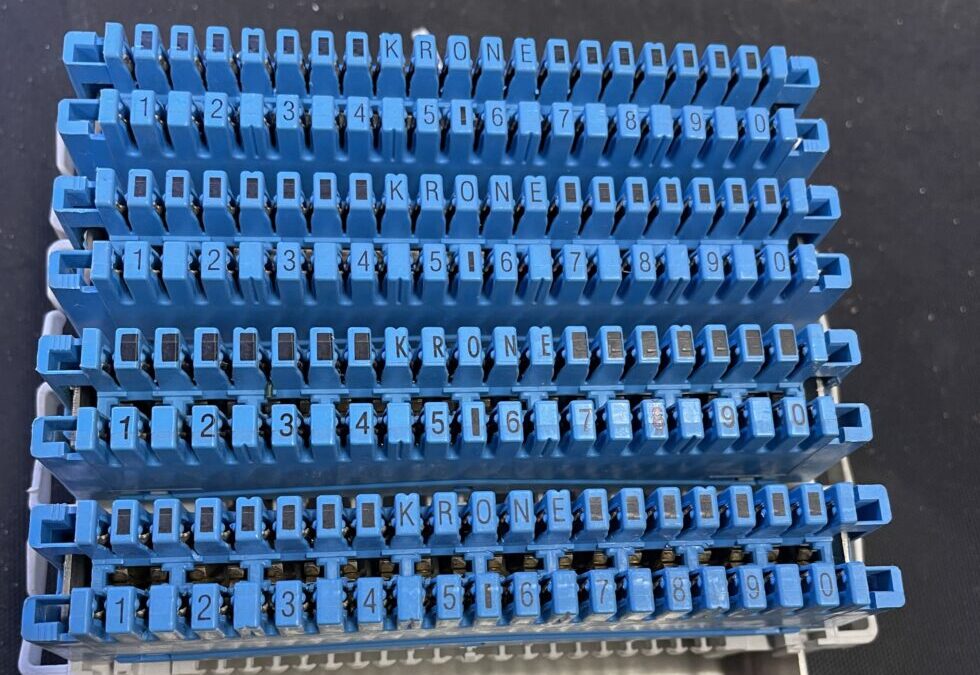Mentors: Learning by Watching and Listening
Have you ever seen a Krone block and wondered what it was for? I wouldn’t have known either — not until 1991, when I met someone who would change the entire course of my career. His name was George Hattingh Snr, and he became one of the most influential mentors in my life. At that time, I saw myself as a “sound guy,” someone who knew audio, wiring, and equipment. But George saw something more. He saw potential.
Working with George opened my eyes to a world beyond speakers and mixers. He introduced me to telecommunications — specifically, the installation, configuration, and maintenance of PABX systems. Before long, I wasn’t just running cables; I was programming extension lines, setting up new office communications, and troubleshooting systems. George didn’t just teach me how to install things — he taught me installation principles that would form the foundation of everything I’ve done since.
From Sound Guy to Systems Integrator
One of the first things I learned on the job was how to reassign telephone extensions within an office space. When someone new joined the company, or if someone changed desks or offices, I’d reconfigure where that person’s telephone line came from. In some cases, that meant physically moving wires. In others, it meant programming the system to reflect the new layout.
The key hub for all these changes? The Krone block. If you’re unfamiliar with the term, think of it like a traffic director for phone lines. All the extensions from the PABX system came in on the top row, and all the outgoing lines to the telephones went out on the bottom row. Every change, every connection, and every adjustment passed through this humble piece of hardware. It was my first introduction to structured cabling — a discipline that, when done properly, makes everything else in a communications system work flawlessly.
Mentors – Give Lessons That Stick for a Lifetime
It’s been nearly 30 years since I first touched a Krone block, but the lessons I learned back then have stuck with me. George didn’t just show me how to wire a block or run a cable — he instilled in me a mindset. It was about doing things the right way the first time. It was about understanding why you connect certain things in a certain order, or why neatness in your wiring matters just as much as the technical connection.
These are lessons that go beyond any one tool or brand. They’re about professionalism, responsibility, and pride in your work. Whether I’m wiring a rack for a sound system or re-routing data lines in a commercial building, I still apply the very same principles George taught me all those years ago.
Mentorship, Legacy, and the Next Generation
George passed away years ago, but his influence hasn’t faded. There are many people in this industry — people like me — whose lives and careers were shaped by his guidance. He believed in teaching, not just telling. He demonstrated what it meant to lead by example, and he never hesitated to share what he knew.
That mentorship made such an impact on me that it’s now one of my personal goals: to pass along what I’ve learned to those coming after me. I want to share the techniques, habits, and installation principles that have guided my work for decades. Not just the “how” of the job — but the “why.”
Carrying the Principles Forward
The world of technology may have changed dramatically since 1991, but some things remain constant. Good installation work still requires precision, care, and a commitment to quality. A well-wired system still speaks volumes about the installer. And the principles that shaped my early years? They’re more relevant than ever.
So, whether you’re just getting started in the industry or you’ve been at it for years, take a moment to think about the people who influenced you — and the principles you still carry. If you’re in a position to mentor someone else, take the opportunity. Pass on your knowledge. Share your experiences. Help build a new generation of professionals grounded in solid, time-tested installation principles.
Because at the end of the day, good work is more than just wires and connections — it’s about legacy.

